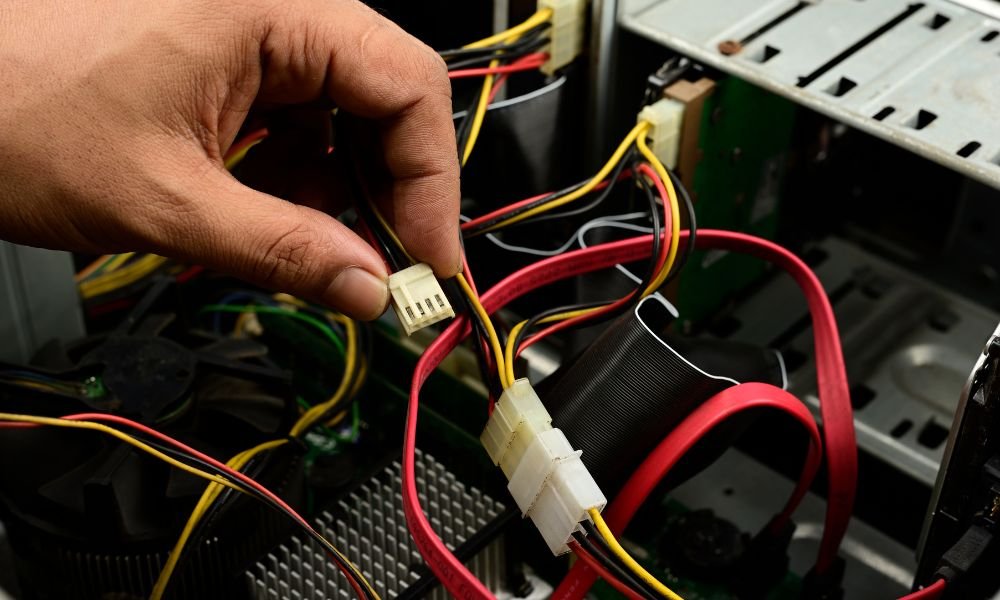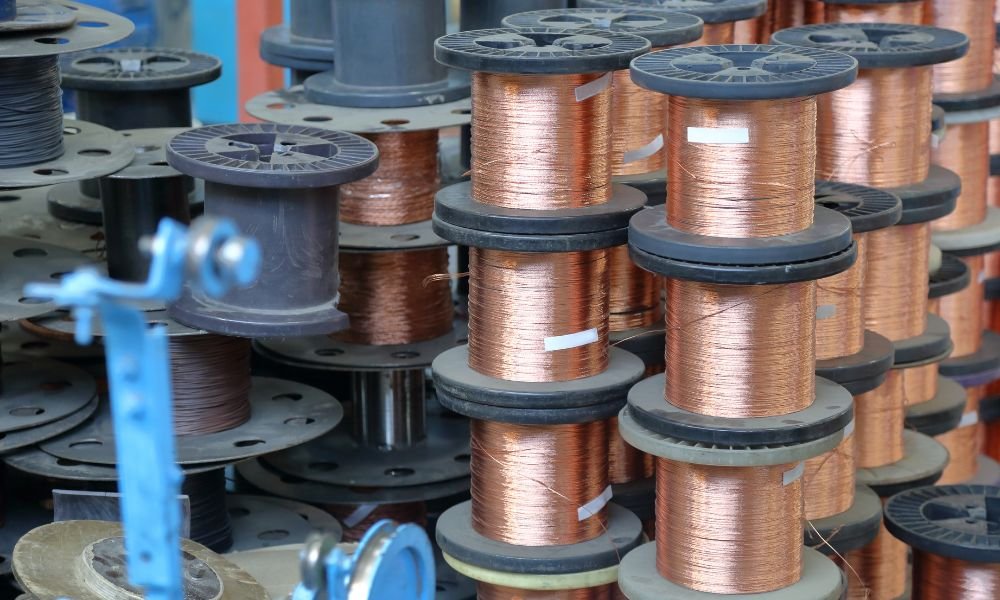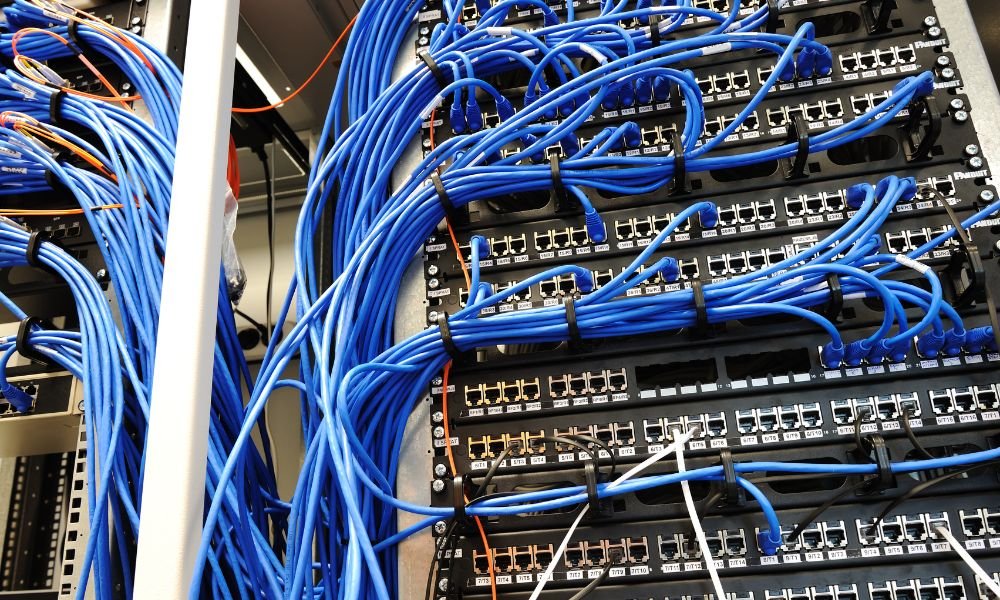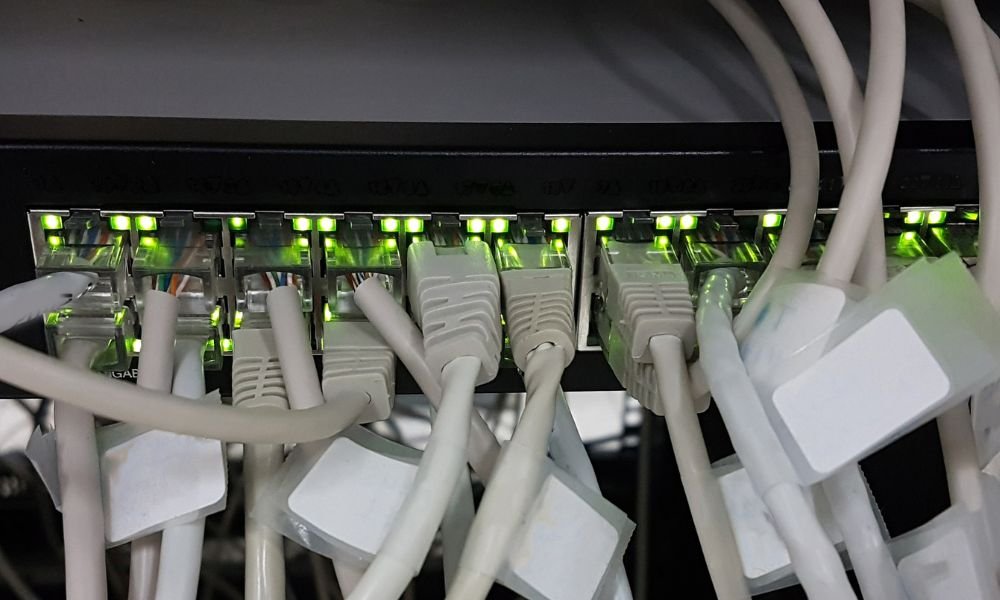In an increasingly interconnected world, the importance of internet wiring cannot be overstated. It serves as the unheralded backbone of our digital lives, enabling seamless connectivity that powers everything from business operations to streaming entertainment and smart home devices. As we delve into this comprehensive guide, our purpose is clear: to provide you with a deep understanding of internet wiring, its diverse types, best practices for installation, crucial considerations, and the evolving trends shaping its future.
Whether you’re a tech enthusiast, a homeowner looking to optimize your network, or a business professional seeking to enhance connectivity, this guide is your gateway to mastering the world of internet wiring. Join us as we unravel the intricacies and possibilities of this fundamental technology that fuels our digital age.
Understanding Internet Wiring
What Is Internet Wiring?
Internet wiring forms the invisible infrastructure that underpins our digital connections. Let’s delve into its essence:
- Defining Internet Wiring: Internet wiring is the network of physical cables that facilitates data transmission between devices and networks. It includes various cable types, connectors, and pathways meticulously designed to ensure reliable connectivity.
- Crucial Role in Data Transmission: At its core, internet wiring serves as the dependable carrier of data, enabling the smooth flow of information between devices and across the internet. Unlike wireless connections, which rely on radio waves, internet wiring utilizes physical connections to transmit data.

Types of Internet Wiring
The world of internet wiring is diverse, offering a range of options tailored to specific needs:
- Ethernet Cables: These include Cat5e, Cat6, Cat6a, and Cat7 cables. They are known for their versatility, high bandwidth, and low latency. Ethernet cables are commonly used for local area network (LAN) connections within homes and businesses.
- Fiber Optic Cables: Fiber optics, available in single-mode and multi-mode variants, are synonymous with blazing-fast data transfer speeds. They excel in scenarios requiring high bandwidth, such as long-distance communication and data center connections.
- Other Types: Beyond Ethernet and fiber optic cables, internet wiring encompasses an array of solutions. Coaxial cables are prevalent in cable TV and internet connections, while powerline adapters transform electrical circuits into data conduits. Twisted-pair cables, used in telephone lines and some network installations, are another integral part of the ecosystem.
Advantages of Internet Wiring
Internet wiring offers unparalleled reliability. It is impervious to signal interference and maintains stable connections, reducing the likelihood of dropouts or disruptions.
Internet wiring delivers consistent performance, especially in high-traffic environments. This stability is vital for activities like video conferencing, online gaming, and mission-critical business operations.
With internet wiring, high-speed data transfer is the norm rather than the exception. It empowers users with rapid downloads, minimal latency, and the ability to handle bandwidth-intensive tasks seamlessly.
Wired connections inherently provide a higher level of security compared to wireless counterparts. The data transmitted over internet wiring is less susceptible to interception, enhancing privacy and confidentiality.
Consider scenarios where internet wiring shines, such as a home office with multiple devices requiring low-latency connections, or a data center processing massive volumes of information at lightning speed.

Internet Wiring Installation
Planning Your Internet Wiring
Before diving into the physical installation, a well-thought-out plan is paramount:
- Importance of Careful Planning: Planning is the foundation of a successful internet wiring installation project. It ensures that the installed infrastructure aligns with your current and future network needs. Without a plan, you risk inefficient layouts and unnecessary expenses.
- Assessing Network Needs: Assess your network requirements comprehensively. Consider factors such as the number of devices, their locations, the anticipated data flow, and any future expansion plans. This assessment will guide your decisions throughout the installation process.
Internet Wiring Installation Process
A systematic approach is key to a successful internet wiring installation:
- Step-by-Step Installation: The installation process typically involves cable routing, termination, and testing. Cable routing includes running wires from their source to the intended destination, ensuring minimal interference and optimal performance. Termination involves connecting cables to connectors, jacks, or ports, while testing verifies that the connections are sound.
- Cable Management: Effective cable management is crucial for an organized and efficient setup. It prevents cable tangling, eases troubleshooting, and ensures a neat appearance. Techniques like cable trays, raceways, and color-coding can simplify cable management.
- Grounding and Electrical Safety: Grounding is an essential safety measure in internet wiring installation. It helps prevent electrical hazards and ensures a safe environment for both users and equipment. Compliance with electrical safety standards is paramount to avoid accidents.

Maintenance and Troubleshooting
Ensuring the longevity and reliability of your internet wiring requires proactive maintenance and troubleshooting:
- Best Practices for Maintenance: Regular maintenance checks can identify issues before they lead to network disruptions. Periodic inspections of cables, connectors, and termination points can prevent signal degradation and ensure optimal performance.
- Troubleshooting Common Issues: Signal loss, cable damage, and connectivity issues are common challenges in internet wiring. Equip yourself with troubleshooting skills to identify and address these issues promptly. Invest in testing tools like cable testers and signal analyzers for accurate diagnostics.
- Testing Tools and Techniques: Understanding the tools and techniques for testing internet wiring is invaluable. Learn how to use cable testers to assess cable integrity, check for signal quality, and identify faults. Familiarize yourself with the intricacies of testing for continuity and proper termination.
Benefits of High-Quality Internet Wiring
Reliability
Reliability is the bedrock of high-quality internet wiring:
- Reduced Downtime: High-quality internet wiring minimizes downtime, ensuring that your connections remain stable and uninterrupted. This reliability is particularly critical for businesses where even a short interruption can result in lost productivity and revenue.
- Consistent Internet Access: Reliable internet wiring guarantees consistent access to online resources, preventing frustrating disruptions during critical tasks. Businesses that rely on constant connectivity, such as e-commerce platforms and remote collaboration tools, reap the benefits of uninterrupted operations.
Speed and Performance
High-quality cabling ensures that data travels at blazing speeds, ideal for activities like streaming high-definition content, online gaming, and rapid downloads. It’s the difference between seamless 4K video streaming and frustrating buffering.
Whether in a home network or a data center, superior wiring optimizes overall network performance. It means smoother video conferencing, snappy web browsing, and responsive online experiences for users.
The advantages extend to businesses managing large file transfers, cloud-based applications, and data-intensive operations. A well-structured and high-quality wired network ensures efficiency and productivity.

Security
Security is another area where internet wiring excels:
- Data Protection: Internet wiring provides a more secure data transmission compared to wireless connections, which are susceptible to interception. Wired connections are less prone to eavesdropping, enhancing data privacy and confidentiality.
- Encryption: Many internet wiring systems support encryption protocols, further securing data during transmission. This encryption adds an extra layer of protection, making it challenging for unauthorized parties to access sensitive information.
- Network Segmentation: Wired networks can be segmented more easily, isolating specific devices or sections for added security. This helps contain potential breaches and limits unauthorized access.
Choosing the Right Internet Wiring
Assessing Your Internet Needs
Before you embark on selecting internet wiring, a thorough assessment of your requirements is essential:
- Understanding Your Needs: The importance of understanding your internet requirements cannot be overstated. Consider the number of devices that will be connected, their locations, and the type of data you’ll be transmitting. This assessment forms the basis for selecting the right type and length of wiring.
- Selecting the Right Type: Depending on your usage, you might require Ethernet cables like Cat5e, Cat6, Cat6a, or Cat7 for standard data transfer. However, for specialized applications or longer distances, fiber optic cables might be more suitable. Choosing the right type ensures optimal performance.
- Length Matters: The length of your internet wiring should match the layout of your space. Measure distances accurately and select cables that are neither too short, causing tension, nor too long, leading to cable clutter.

Quality and Brand Considerations
Consider factors like the cable’s build quality, shielding, and conductor materials. High-quality cables use better materials and insulation, reducing signal interference and ensuring durability.
Trustworthy manufacturers with a proven track record are more likely to produce reliable wiring. Look for brands that adhere to industry standards and have a history of quality products.
Familiarize yourself with industry standards like TIA/EIA for Ethernet cables and ITU-T for fiber optic cables. These standards ensure that the wiring meets specific performance and safety criteria.
By assessing your needs and selecting high-quality, reputable wiring that aligns with industry standards, you’re laying a strong foundation for a robust and dependable network. In the next section, we’ll explore the evolving landscape of internet wiring and its role in emerging technologies and sustainability.
Internet wiring is not just a set of cables; it’s the foundation of reliable and scalable network infrastructure. Whether for homes, businesses, or data centers, understanding the importance of internet wiring ensures seamless connectivity in our digital age.

